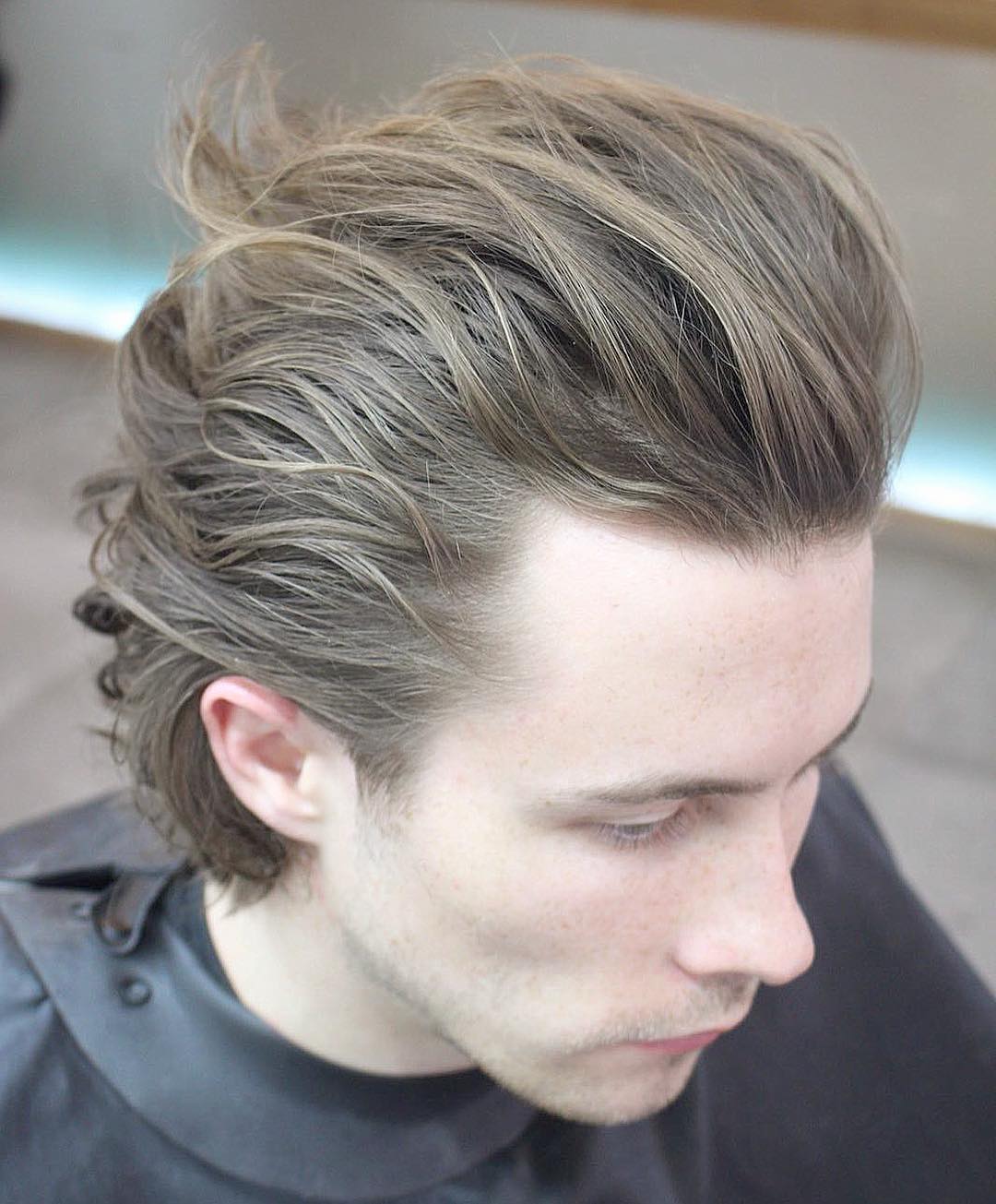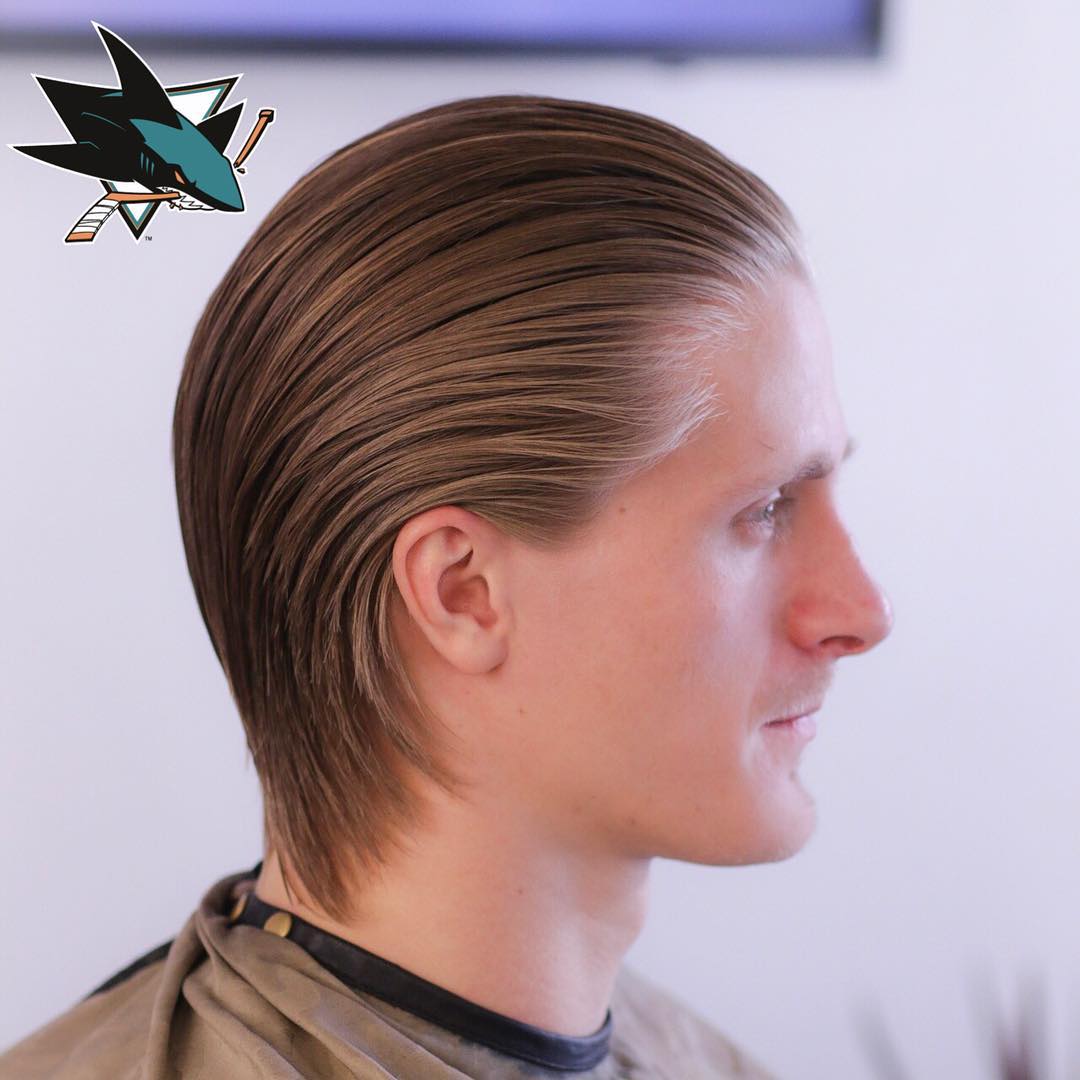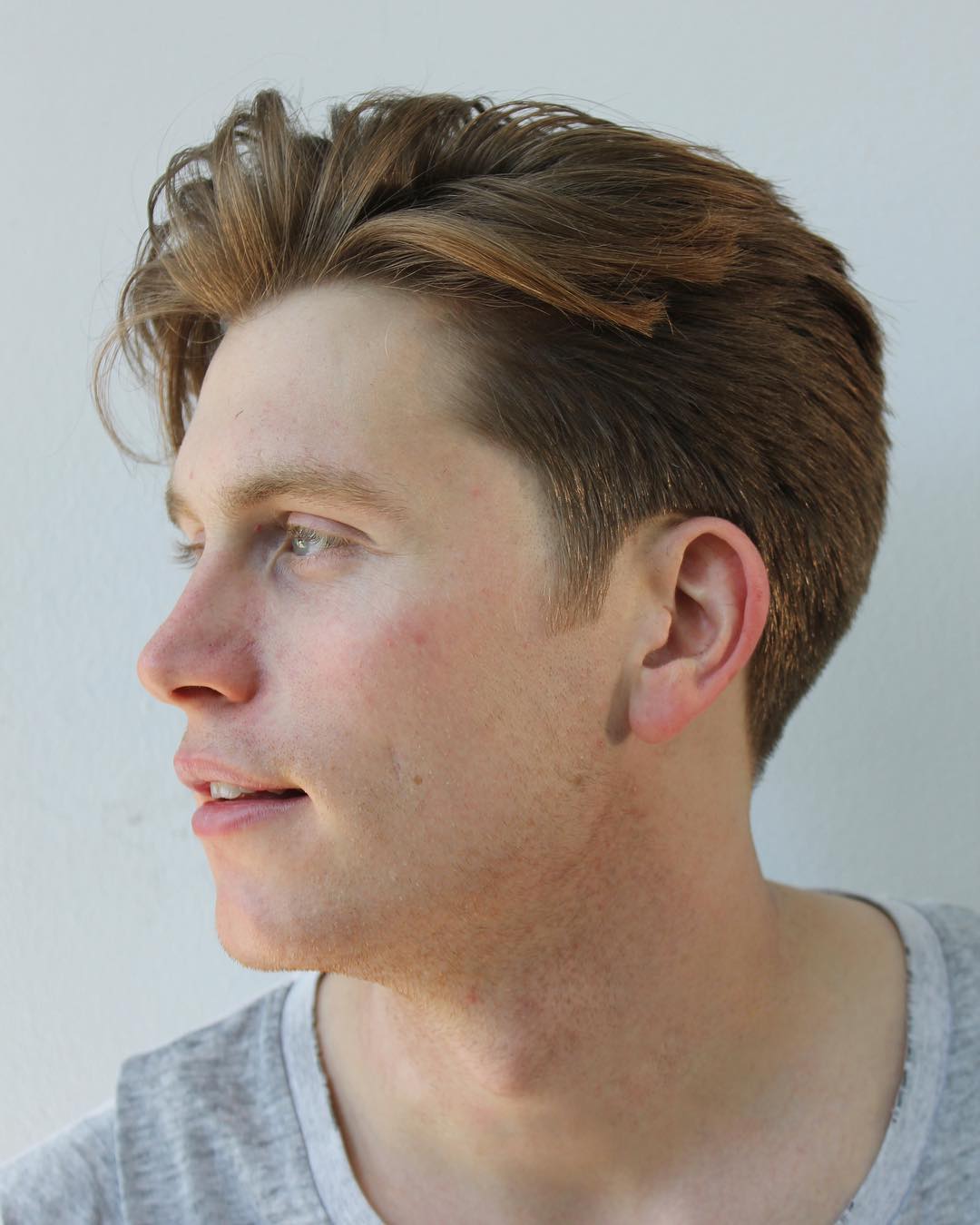Styling Men’s Hair While Growing It Out: A Comprehensive Guide to Managing the Transition

The decision to grow out men’s hair represents a significant shift in personal grooming and aesthetic presentation. While the prospect of achieving a desired longer style is often appealing, the journey through the intermediate stages, commonly referred to as the “awkward phase,” can present considerable challenges. Hair during this period often lacks a defined shape, can appear unruly, and may seem difficult to manage, potentially leading individuals to abandon their growth aspirations prematurely. This article provides a comprehensive insight into the strategic management of this transition, emphasizing the importance of consistent care, deliberate styling techniques, and professional guidance to maintain a polished and presentable appearance throughout the entire process. A well-executed approach to managing hair during its growth ensures that the interim stages are not merely endured but are actively shaped, leading to a more satisfying and successful outcome.
Understanding the Growth Phases
Effective hair management during growth necessitates an understanding of the distinct phases involved. Each stage presents unique challenges and opportunities for manipulation.
- Initial Stage (Short to Medium Length): This phase typically involves hair transitioning from a very short cut (e.g., a fade or buzz cut) to a length that begins to cover the ears or reach the nape of the neck. The primary challenge here is the uneven growth rate of different sections of hair. Sides and back often grow faster or appear bulkier than the top, creating an unbalanced silhouette. Hair may stick out at odd angles, resist lying flat, and lack the weight needed for gravity to assist in styling. This stage demands patience and strategic trimming to maintain a semblance of order.
- Medium Stage (Medium to Long Length): As hair surpasses the ears and begins to approach the collarbone, it enters the medium length phase. Here, there is often enough length to begin experimenting with more defined styles, but also enough bulk to become unruly without proper care. The hair may start to develop its natural texture more prominently, and specific styling products become indispensable for control and definition. Layers might be considered during this phase to remove weight and enhance shape, preventing a “helmet-like” appearance.
- Long Stage (Desired Length and Beyond): Once the desired long length is achieved, the focus shifts from growth management to ongoing maintenance and refinement. Hair has sufficient weight to lie more naturally, and a wider array of styling options become available. However, long hair demands diligent care to prevent damage, dryness, and split ends, ensuring its health and aesthetic appeal are preserved.
Essential Hair Care for Sustainable Growth
Maintaining hair health is paramount when pursuing longer styles. Neglecting proper care can lead to breakage, dullness, and stunted growth, undermining the entire endeavor.
- Gentle Cleansing and Conditioning: The frequency of hair washing should be tailored to individual hair type and scalp condition. Over-washing can strip natural oils, leading to dryness and frizz, while under-washing can result in product buildup and an oily scalp. A mild, sulfate-free shampoo is recommended to cleanse without harshness. Following every wash with a high-quality conditioner is crucial to replenish moisture, detangle, and protect the hair shaft. Conditioners help to smooth the cuticle, reducing friction and preventing breakage as hair grows longer.
- Deep Conditioning and Moisturization: Weekly or bi-weekly deep conditioning treatments are highly beneficial, especially for longer hair that is more prone to dryness at the ends. These treatments provide intensive hydration and nutrients, strengthening the hair and improving its elasticity. Leave-in conditioners or lightweight hair oils (e.g., argan, jojoba) can be applied to damp hair to provide ongoing moisture, reduce frizz, and add shine, particularly to the mid-lengths and ends.
- Minimizing Heat Damage: Excessive use of heat styling tools (blow dryers, straighteners, curling irons) can severely damage hair, leading to dryness, split ends, and breakage. When heat styling is necessary, a heat protectant spray should always be applied beforehand. Air-drying whenever possible is a healthier alternative, preserving the hair’s natural integrity.
- Regular, Strategic Trims: The concept of “dusting” or “maintenance trims” is critical. While counterintuitive to the goal of growing hair, regular micro-trims (removing only a quarter to a half-inch of hair) every 8-12 weeks are essential. These trims remove split ends before they can travel up the hair shaft, preventing further damage and ensuring healthy growth. A skilled barber or stylist can also strategically shape the hair during these trims, removing bulk from the sides and back while preserving length on top, thus maintaining a more balanced and refined appearance throughout the growth process. This proactive approach prevents the hair from looking unkempt and promotes healthier, more robust growth.
Strategic Management for Awkward Lengths
The “awkward phase” is perhaps the most challenging, demanding clever styling and product application to maintain a presentable look.
- Product Selection: The right styling products are indispensable.
- Pomades: Offer Short Blonde Undercut Hairstyles A Comprehensive Guide To This Edgy And Elegant Coiffure various holds and finishes (matte, natural, high shine), ideal for slicking back or creating textured styles.
- Gels: Provide strong hold and a wet-look finish, useful for keeping stubborn sections in place.
- Mousse: Adds What Type Of Hairstyles Are There volume and light hold, particularly beneficial for fine hair or when embracing natural texture.
- Sea Salt Sprays: Create a textured, lived-in look, enhancing natural waves and adding volume without heaviness.
- Hair Sprays: Used as a finishing product to set a style and provide extra hold.
- Styling Techniques for Shorter Stages (E.g., Ear-Length):
- Slicked Back: Using a medium-hold pomade or gel, hair can be combed straight back, keeping it off the face and creating a neat appearance. This works well when the top has some length but the sides are still relatively short.
- Side Part: A deep side part, combined with product, can effectively direct hair to one side, preventing it from falling into the eyes. This classic look offers a clean and professional aesthetic.
- Textured Crops (if length allows): If the top has enough length to be styled forward or upward, a textured crop can be achieved with a matte product, giving a casual yet controlled appearance.
- Styling Techniques for Medium Stages (E.g., Neck-Length):
- Pushed Back/Side-Swept: As hair gains more length and weight, it can be more easily pushed back or swept to the side, away from the face. Using a blow dryer with a round brush can help to create volume and direct the hair.
- Half-Up Styles: When hair reaches sufficient length to be gathered, a half-up style can be an effective way to keep the top sections out of the face while allowing the rest to hang freely.
- Embracing Natural Texture: For individuals with wavy or curly hair, this stage is an excellent opportunity to enhance natural texture with appropriate products like curl creams or sea salt sprays.
- The “Flow” Look: This style involves allowing the hair to fall naturally, often swept back from the face, creating a relaxed yet stylish appearance. This typically requires significant length on the top and sides.
- Layering: A professional stylist can strategically add layers to reduce bulk, add movement, and create a more flattering shape, preventing the hair from appearing heavy or shapeless.
The Indispensable Role of the Barber or Stylist
Professional guidance is invaluable throughout the growth process. A skilled barber or stylist acts as a partner, ensuring the hair progresses healthily and stylishly.
- Regular Consultations: Scheduling regular appointments, even if only for shaping and maintenance, allows a professional to monitor hair health and provide personalized advice. A stylist experienced in managing hair growth understands how to trim and shape without compromising the ultimate goal of length.
- Shaping and Layering Expertise: A professional possesses the expertise to introduce layers that enhance the hair’s natural flow and reduce unwanted bulk, particularly around the sides and back, without sacrificing length on top. This creates a more balanced and aesthetically pleasing silhouette during the awkward stages.
- Maintaining Neckline and Sideburns: Even when growing out the top, keeping the neckline and sideburns neatly trimmed provides a crucial element of refinement. This attention to detail prevents the hair from appearing completely unkempt and signals intentionality in the growth process.
- Product Recommendations: Stylists can recommend specific products tailored to individual hair type, texture, and the current growth stage, ensuring optimal care and styling results.
Patience and Persistence: The Ultimate Virtues
Growing out hair is a test of patience. The process is gradual, and there will be days when the hair feels uncooperative or appears unruly. It is important to remember that consistent care, strategic styling, and adherence to professional advice will ultimately lead to the desired outcome. Viewing the transition as an opportunity for experimentation with different styles and products can make the journey more engaging. The reward for perseverance is a versatile, healthy, and stylish longer hairstyle.
FAQs by styling men’s hair while growing it out
- How often should hair be trimmed during growth?
Hair should typically be trimmed every 8 to 12 weeks. These are usually “dusting” or “maintenance” trims, focusing on removing split ends and shaping the overall silhouette without significantly reducing length. - What products are best for managing flyaways and frizz during the awkward phase?
Lightweight leave-in conditioners, hair oils (such as argan or jojoba), and anti-frizz serums are highly effective. A light-hold hairspray can also be used to tame specific flyaways without making the hair stiff. - Can hair be grown out from any initial length or cut?
Yes, hair can be grown out from virtually any initial length. However, the starting point will influence the timeline and the specific challenges encountered during the initial stages. A very short cut will generally require more patience in the beginning. - How can hair be Best Hairstyles For Medium Length Curly Hair A Comprehensive Guide prevented from looking messy or unkempt during the transition? Regular strategic trims to maintain shape, consistent use of appropriate styling products to control volume and direction, and keeping the neckline and sideburns neat are crucial for preventing an unkempt appearance.
- Is it necessary to wash hair less frequently during growth?
Washing frequency should be determined by individual hair type and scalp condition. While over-washing can strip natural oils, some individuals with oily scalps may still require more frequent washing. Using a gentle, sulfate-free shampoo and a good conditioner is key.
Tips by styling men’s hair while growing it out
- Invest in quality hair products: Shampoos, conditioners, and styling aids specifically formulated for hair type can make a significant difference in manageability and health.
- Schedule regular shaping appointments: Professional trims are essential for maintaining a presentable look and promoting healthy growth, even when aiming for length.
- Experiment with different partings: Adjusting the hair’s parting can dramatically change its appearance and help manage unruly sections during various growth stages.
- Protect hair from environmental damage: Use hats or UV protection sprays when exposed to prolonged sun, and consider a silk pillowcase to reduce friction and breakage during sleep.
- Consider accessories for challenging days: Headbands or stylish hats can be practical solutions for managing hair on days when it is particularly uncooperative or when an immediate neat appearance is required.
Conclusion by styling men’s hair while growing it out
The journey of growing out men’s hair is a transformative experience that demands dedication and strategic management. A well-executed approach ensures that the transition phases are not only tolerable but also aesthetically pleasing. Through consistent hair care practices, informed product selection, skillful styling techniques, and the invaluable guidance of a professional barber or stylist, individuals can navigate the challenges of the “awkward phase” with confidence. The ultimate reward for this sustained effort is the achievement of a desired longer hairstyle that is healthy, stylish, and reflective of personal preference. This process, when managed effectively, transforms a potentially frustrating period into an opportunity for personal grooming evolution.







More suggestion: Signs As Hairstyles Unveiling Astrological Influences On Hair Aesthetics